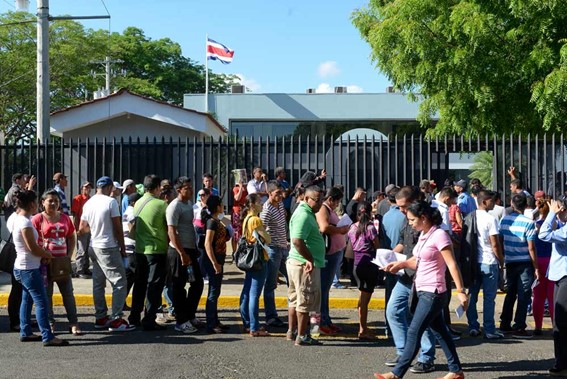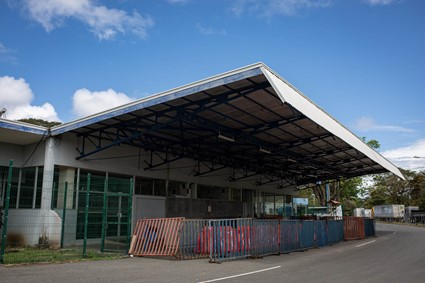Costa Rica Reopens for Tourists from anywhere Except Nicaragua

Costa Rica’s land borders are set to open on April 5th. However, tourist visas won’t be available in Nicaragua until at least April 30th.
By Cindy Regidor (Confidencial)
HAVANA TIMES – The Costa Rican consulates in Managua and Chinandega won’t yet resume issuing tourist visas. Raquel Vargas, director of Costa Rica’s Bureau of Immigration and Foreign Affairs, informed Confidencial of this decision on March 24th.
On March 23 – one day earlier – Costa Rica had announced the reopening of their land borders, scheduled for April 5th. However, Vargas clarified, visa services for both tourist and transit visas will remain suspended. The suspension will continue until at least April 30.
This means that the only Nicaraguan tourists that can enter Costa Rica by land are those with a USA visa. This has been the case since the pandemic. The other group permitted to enter by land are tourists from other nationalities who meet the country’s entry requirements.
Consulates contemplating new procedures
Raquel Vargas explained the decision. “In the last year before the pandemic, the Costa Rican consulates in Nicaragua were seeing some 800 people a day. We can’t have that in the upcoming months, until Costa Rica manages to get the consuls vaccinated. We have to establish a new way of working.”
The official added that they’re coordinating with the Costa Rican foreign ministry, to offer a new modality of public attention. This involves issuing visas digitally, so that people don’t have to physically come to the consulates. Instead, they’ll be able to apply online. “That would improve the service and give us some security in terms of crowd management, thus avoiding contagion,” she explained.
The visas that can be issued are for family reunification. That is, parents, children, and spouses of Costa Rican citizens can request visas. Visas can also be issued for students, academic personnel or for work.
Clarifying the new measures
On March 23, Gustavo Segura, Costa Rica’s Tourism Minister, held a press conference to announce the reopening of the country’s land borders. They’re scheduled to reopen on April 5th, a year and 16 days after their closure due to the pandemic.
The authorities decided to open the land borders to encourage the reactivation of tourism. “Many of the European tourists, given that they visit from far away, are interested in combining destinations in several countries. On our northern border, there are several binational corridors: for example La Cruz (Costa Rica) and San Juan del Sur (Nicaragua). Another is Los Chiles (Costa Rica) and Lake Cocibolca (Nicaragua).”
Segura also mentioned the case of European tourists in Nicaragua or Panama who want to visit Costa Rica.

“Costa Rica is the last Central American country to open their land borders. Like other countries, they’re doing it in a very responsible way, organizing entries in a gradual way,” Raquel Vargas stated.
Costa Rica also opened its air and sea borders gradually, beginning in August 2020. Airports began receiving international flights from certain countries four months after the first Coronavirus case was detected in Costa Rica.
In November, the Costa Rican government opened their air and sea borders to people entering from any country, including Nicaragua. The land borders, however, remained closed to foreigners.
Health requirements for entry
Tourists must meet the already established entry requirements, plus present a special Health Pass. This must be completed 48 hours before entry.
Travelers entering by air, sea or land must show proof of, or else acquire, an international insurance policy. The policy must cover any medical attention needed for COVID-19. It must also cover lodging costs, if the traveler should become infected while in the country.
The policy must cover a minimum of five days. That’s a set requirement, even for travelers in transit, or those planning to remain in the country for less time.
A number of companies have been accredited by the Costa Rican Tourist Institute to offer temporary coverage to travelers. Among them are the National Costa Rican Insurance Institute, BlueCross BlueShield Costa Rica, and Sagicor. The cost of these policies runs from eleven dollars a day, on up.
Costa Rica doesn’t ask for proof of a negative COVID-19 test to enter. However, the Nicaraguan government does require this for entry. Those planning to travel from Costa Rica to Nicaragua should be ready to present proof of a recent negative COVID test.
Beginning Monday, April 5th the Costa Rican side of the Peñas Blancas border post will resume stamping in tourists. There’ll be some new health regulations in place, such as maintaining six feet of distance between people. The use of masks and a handwashing station before entering the migration office will also be obligatory.
The impact of the border closure
The year-long closure of the Costa Rican land borders has had widespread economic effects. Many depended on the hustle and bustle that had been the norm there, in order to make a living. This is especially true in Peñas Blancas, on the border between Nicaragua and Costa Rica. Those affected include formal and informal workers, international bus transport companies, and small and medium businesses. The domino effect hit the nearby towns, like La Cruz in the Costa Rican canton of Guanacaste, and Cardenas in Nicaragua.
The situation in the zone has been documented in a special report entitled “Closed Border”. The report was a collaboration between Confidencial, a Nicaraguan independent news site, and the Costa Rican outlets La Voz de Guanacaste and Interferencia. The report was released on March 21st, 2021.
Those interviewed noted other consequences of the border closure. These include an increase in illegal crossings over unmarked border points. The closures were also a large obstacle for families and loved ones that are split between the two countries. Such was the case for Cristhian Garcia, a Nicaraguan currently petitioning for refugee status in Costa Rica.
“Last year, I planned to bring my family here to spend Easter Week, he stated. “But the pandemic and the border closure kept me from doing that. I thought that by this time, things would be getting better and I could send for them to visit.” As it turns out, unless his Nicaraguan family possesses a US visa, they still won’t be visiting him in Costa Rica.
Read more from Nicaragua here on Havana Times.





